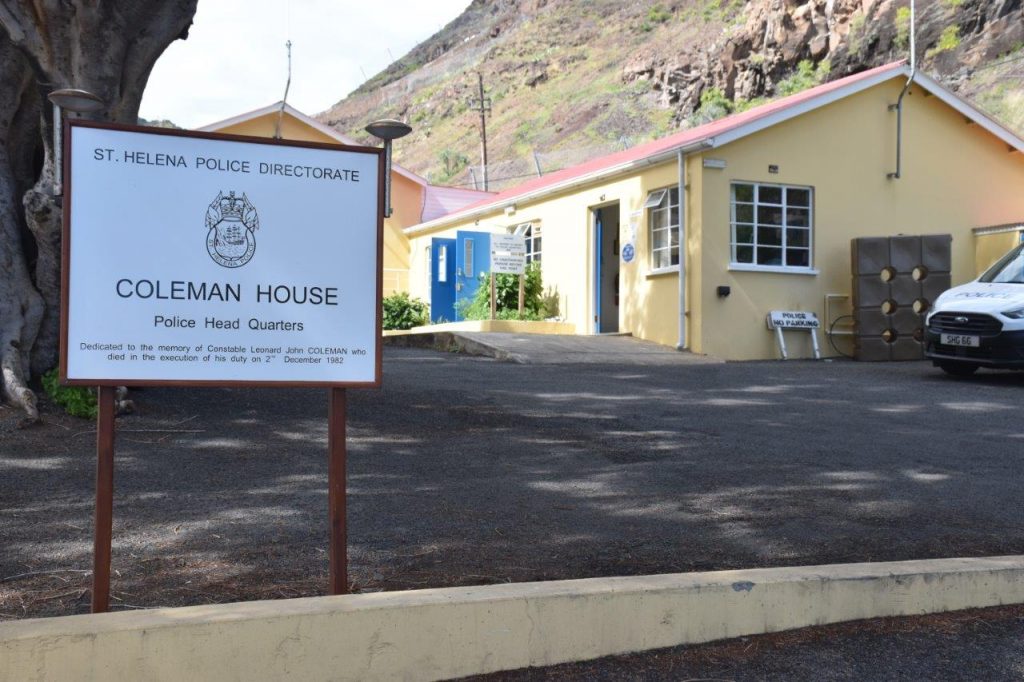15 June 2021
St Helena Police are currently conducting an education and awareness programme for the local community. Each week a different topic will be aired on local radio stations, issued via information releases and posted on Social Media.
This week’s topic is Assaults:
There are several levels of assault:
Common Assault and Battery – which are the lowest levels of assault.
Common Assault is ‘any act where a person intentionally or recklessly causes another person to apprehend immediate and unlawful personal violence.’
An assault can be committed by an act indicating an intention to use unlawful violence against another person – for example, an aimed punch that fails to connect, where a person spat towards another – although there is no actual violence in this case, spitting is an assault whether it makes or does not make contact with the victim, or through an act that causes fear of immediate unlawful physical contact.
Battery is committed by the intentional or reckless application of unlawful force to another person. Where there is a Battery, the defendant may be charged with ‘assault by beating’. In a stated case it quoted that provided there has been an intentional or reckless application of unlawful force the offence will have been committed, however slight the force.
This is covered by Section 39 Criminal Justice Act 1988 and triable in the Magistrates Court only.
Assault Occasioning Actual Bodily harm (ABH)
The next level of offence is Assault Occasioning Actual Bodily Harm or ABH, covered by Section 47 Offences Against the Person Act 1861 and is triable at Magistrates Court or the Supreme Court.
Examples of injuries: The Law states injuries that fall into this category are those that interfere with health or discomfort but not to a considerable degree such as scratches, bruises, grazes, bloodied or displaced nose, internal bruising, chipped tooth or a black eye.
Wounding or inflicting Grievous Bodily Harm (GBH) and Wounding or causing Grievous Bodily Harm (GBH)
The Highest levels of assault are wounding or inflicting Grievous Bodily Harm covered by Section 20 Offences Against the Person Act 1861 and then wounding or causing Grievous Bodily Harm with intent under Section 18 Offences Against the Person Act 1861, section 20 GHB is triable either way at Magistrates or the Supreme Court whereas Section 18 GBH is indictable only and can only be tried at
the Supreme Court. Examples of such injuries are fractures or breaks, lacerations or stab wounds, permanent disability, permanent loss of a sensory function, more than a minor permanent disfigurement, broken or displaced limbs or bones, injury causing substantial loss of blood and psychiatric injury. The difference between Section 18 and section 20 of GBH Assault is the offender’s intention at the time of the assault.
There are defences to assaults and these are as follows:
Consent – such as in Sport – football, rugby, martial arts boxing – to name a few, as long as they fall within the guidance of the game or sport
Use of force in the execution of a legal right or duty – Law Enforcement Officers
Legal justification for any person to use force under Section 3 of the Criminal Law Act 1977 where it states that any person may use such force as is reasonable in the circumstances for the purposes of self-defence, defence of another, defence of property, prevention of crime; or lawful arrest.
In respect of legal justification any force used must be justifiable, proportionate, necessary and appropriate in order for it to be lawful and persons must remember they are accountable for their own actions.
All allegations of assault are investigated by the Police.
SHG
15 June 2021
